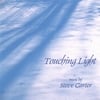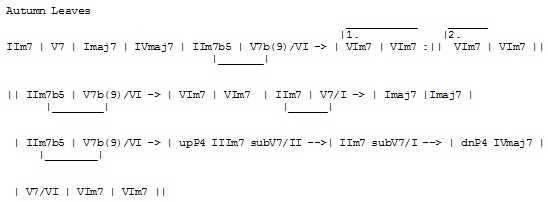


|
Player's Journal 2007 2015 2014 2013 2012 2011 2010 2009 2008 2007 2006 2005 2004 2003 2002 12/31/2007 Touching Light Released I've just released my latest CD, Touching Light. Click here to hear some sound clips. The idea for the CD began in a guitar lesson. I was talking to a student about the idea that a modal vamp should "exhaust the scale," that is, use all the notes of the scale. I started playing an A minor chord and gradually adding other notes from the A Aeolian mode. I could hear a comping pattern in my head, but I couldn't manage to play all the notes on the guitar. After the lesson, I fired up Notion, and notated the comping pattern for string orchestra. I like the way it sounded and played it for my wife, Marilynn. She said, "That's nice. I'd like to use it as background music in my Reiki sessions." The piece was about two and a half minutes long, and seemed too repetitive to me, so I went back to Notion and added a flute part, and elaborated a bit on the string lines. Marilynn liked that so much that she said I should do a whole album of pieces like it. So I started composing. In Marilynn's energy work (Reiki, Magnified Healing, and so forth), the energy is often refered to in terms of light, so I decided to take light as the theme for the album. Last winter, while vacationing in Plymouth, NH, I had taken some photos of afternoon light on the snow. I selected one of those photos as the album cover. Each of the pieces deals with some aspect of light. I wrote a piece with the working title of "Snow Shadows," based on the cover photograph. The piece opens with four chords on the guitar, basically Amaj7 and Dm7 with an A pedal point in the base. The piece evolves, changing very slightly, the way shadows on the snow change gradually as the afternoon progresses. 11/12/2007 Touching Light In Progress 
I'm working on a new CD that I hope to release in early December, called Touching Light. It comprises all original compositions. Each piece is a meditation on some aspect of light. The CD is meant to be very relaxing and to be used as background music for Reiki, yoga, meditation, and so forth. Some of the pieces are just solo guitar, and some have synthesized string and percussion parts I arranged and produced with Notion composition and performance software. The CD opens with a solo guitar piece called "Snow Shadows Afternoon" and closes with a piece for guitar and strings entitled "Snow Shadows Evening." There will be three pieces based on the light that is characteristic of certain months: October, November, and December. There will be a piece based on the changing nature of light reflecting off water, called "Watercourse Reflections." 11/12/2007 Look During the many years I taught at Berklee, I entered information about various tunes into THoTH. Sometimes, just for fun, I look through the database more or less at random. Today I entered a search for tunes that use a minor-ninth chord. The search results included, "The Look of Love," a tune I had not played in many years. I couldn't remember it having a minor-ninth chord, but I had a lead sheet I'd written in MusicPrinter Plus many years ago, so I pulled that up. Near the end of the tune there's a Gmin9 chord. I'm sure I took the lead sheet from the published sheet music, and it's probable that the composer, Burt Bacharach, was involved in the publication, so the changes are probably correct. I discovered - or re-discovered - some interesting features of the tune. This tune provides a good example of Subdominant Minor (SDM), that is, the borrowing of chords from the subdominant minor region while in major. There are two similar melodic phrases in the subdominant area, one using the IVmin6 chord and one using the IVmaj6 chord: Ex. 1 
Ex. 2 
In Example 1, the chord progression is IVMaj7 to IVm6. The notes that distinguish the Subdominant Minor scale from the Dorian and Aeolian modes are the major seventh and the major sixth, in this case A-natural and G-natural, both of which occur in the melody. The melody avoids the third of the IV chord. A few measures later we have a similar melodic shape, this time using the IVMaj6 chord (Example 2). Once again we have the major seventh and major sixth in the melody, and this time we have the major third, D-natural. I often used this tune to introduce students to the joys of SDM. The composer uses the interplay of major and minor to support the mixed emotions of the lyric. In another journal entry I'll go into that in more detail. He also uses rhythm to support the lyric, especially in the measure of six-four time for the lyric, "How long I have waited!" (Example 3) Ex. 3 
11/11/2007 Creative Twist 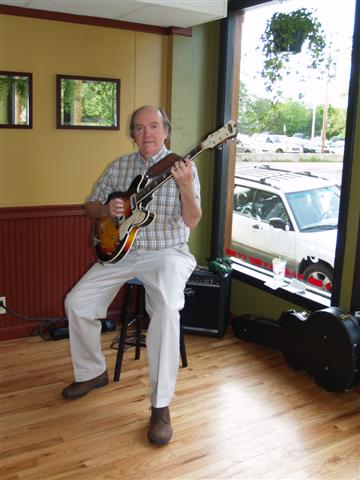
I've been playing every Thursday night since August at Christopher's Third Street Grill in Dover. As you can see from the photo (click on the small image above to enlarge), there is a window to my right. Painted on the window is the restaurant's slogan: "Steak, seafood, & spirits with a creative twist." I play from six to nine PM. As the daylight dims and the street lights come on, the street lamp outside, near the corner where I sit, casts the shadow of the slogan on the wooden floor at my feet. The angle is such that I see the shadow of only one word, "creative," staring up at me from the floor. A constant reminder on how to play. 09/20/2007 Premier Guitar Show Boston 
Last weekend I had a booth for THoTH at the Premier Guitar Show in Boston. Tomo Fujita had a booth. He gave "mini shows" every hour, and played with backing tracks. He sounded great. I know him from my Berklee days, so it was a pleasure to see him after all this time. I had the pleasure of meeting Berklee's oldest graduate, Billy Voiers. He just graduated from Berklee at the age of 62! Fascinating guy. I look forward to getting to know him better. I met the folks who run MusicStudio Direct. Very nice people, thoroughly professional. Their web site is excellent; I highly recommend them. I'm going to try to work with them as resellers for THoTH. At one point, a guy walked by my booth, seemingly in a hurry to get somewhere. He stopped long enough to say, "Steve Carter! I took your Rhythm Guitar Styles class at Berklee. Great class. 'Dudley Bus.' I still have it." 'Dudley Bus' is the name of a duet I wrote and used in that class. It's in 6/4 time with one measure of 5/4, a fun piece of music. It's nice that this guy remembered the piece -- and me -- after all these years. I met Steve Nelson of the Music Museum of New England. Great site, great idea. They are doing a history of Boston music, currenlty focused on the 60's and 70's. I sent Steve a newspaper clipping I had that advertised one of my performances at the Boston Tea Party. I was with the Blues Children, and the bill included us along with the Hallucinations and the Beacon Street Union. I'm sure I'm going to be writing a lot more about this! 08/12/2007 John LaPorta and Guide Tones 
In another interesting entry in LaPorta's book, about "Voice Leading," (he does not use the term "guide tones"), he talks about preparing for a concert in 1953: An atonal composition written by Teo Macero contained different problems,. Teo's improvisational section contained a 40 measure form of seemingly unrelated chords. I had difficulty reading through them and improvising on them as it represented a new experience for me. So I had to devote some extra time studying his work. Memorizing the chords while maintaining their seeming independence wouldn't provide much help. What I needed was some way to link chord combinations together into coherent harmonic phrases. My approach, using "Voice Leading" concepts, consisted of connecting common tones and/or chord tones moving in stepwise motion. This method, a practice commonly used in tonal music for centuries, was certainly not an original idea of mine. But suing the approach for getting a handle on more modern music was unique then and a great help. My next step was to write one or two improvisatory choruses. Writing helps slow down the creative process somewhat, making it easier to control selectivity. After playing them over several times, I began taking liberties with what I had written until it was possible for me to improvise throughout Teo's harmonic structure with confidence. On the night of the concert, my solo on Teo's composition was outstanding. Later, Teo approached me and said, "John, you played better on my piece than I did. I thanked him but also said, "Teo, I know it better than you do. Writing a composition does not prepare you to solo on it. You spent more time learning my compositions than I did! That's why your solos, on them, were better than mine." I think this was the start of LaPorta's concept of "guide tones," which would later become an important part of his teaching at Berklee. 08/12/2007 Overdubs and Musical Ethics 
I just finished reading John LaPorta's autobiography, Playing It By Ear. He has an interesting entry about Lennie Tristano, overdubbing, and musical ethics: We spent two pleasant hours together. During that time he was warm and quite relaxed and there was no mention of our previous encounter. I thought it time to leave but Lennie invited me to stay as Leonard Bernstein and William Kapell, the fine concert pianist, would be along soon. Although quite young, Leonard Bernstein had achieved much popularity as a composer, performer and conductor. William Kapell was one of a handful of pianists known throughout the music world. I soon saw a black stretch limousine pull up to the front of the building. Moments later Lennie ushered in Lee Konitz, Warne March, William Kapell and Leonard Bernstein. Leonard was then the assistant conductor of the Boston Symphony Orchestra. They had just come from a Carnegie hall concert he had conducted with William Kapell as piano soloist. Bernstein had invited Warne and Lee to the concert as his guests. They were obviously excited and came in discussing the concert. The conversation then changed to Lennie's new recording recently released by Atlantic Records. Leonard Bernstein and William Kapell were both plying Lennie Tristano with questions about how he recorded one of the compositions. Bernstein asked, "Did you overdub? Your hands would have bumped into each other if you didn't!" Tristano smugly said, "It's all there on the record!" Lee Konitz and Warne Marsh looked at each other as if to say, "Lennie's got them on the run!" I had heard the composition in question and enjoyed it without considering how Lennie had recorded it. As soon as the discussion took place i realized that the only way Lennie could have produced the recording was by overdubbing. There was no mention on the record cover that he had overdubbed, so the listener could assume that the recording was the product of a single take. Prior to that time performers usually recorded on single-track tap players and overdubbing was not a viable option. The advent of multi-track equipment made available a new world of possibilities for recording music. Discussion at Lennie's pad that night did not consider whether Tristano had the right to overdub parts on his recording. What Lennie was implying by refusing to admit that he had overdubbed was that he had recorded the competition in one take. This would have been an impossible feat. What became questionable was his musical ethics! It was clear to me that the games were still going on and Tristano had not changed! From that point on, Lennie's worlds had little interest for me! My approach to solo guitar has always been, and continutes to be, that anything I do on a recording, I have to be able to do live. On Act One, we did splice an ending from one take of "I've Got It Bad" onto another take, and we did cut out a few milliseconds in "Dindi" where there was a particularly annoying string noise, but other than that, it is all as I played it. No overdubbing. 08/04/2007 An August Beginning 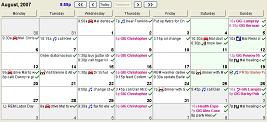
I've been playing the Lamprey River Tavern in Newmarket, off and on, for a few months with PJ Donahue on drums and Steve Roy on bass. I've enjoyed every minute of it. The last time I played the gig, PJ informed Steve and me that he was going to a friend's wedding on August 5th, and asked if we'd do the gig as a duo. We said that would be fine. Steve and I have worked as a duo before and we are very comfortable with each other. The other night Steve called me and said he, too, would be out of town on the 5th, and asked if I'd find someone else for the gig, or do it as a solo. It's more fun to do that gig with someone else, so I started asking around. All the guys I know in the area were either booked, or had family plans (seems that August 5th is a big wedding day). Scott Solsky was interested in doing the gig, but had family commitments. He told me about an alto player who is up from New York for the week: Eric Rasmussen. I gave Eric a call and he agreed to do the gig. So I'll be working with someone new. I'm looking forward to the gig. I have another new beginning in August: a steady Thursday night gig at a new restaurant in Dover, Christohper's Third Street Grille. I had been playing Thursday nights in Newmarket at the Riverworks, but due to road work planned for Newmarket Center, they've decided to postpone the Thursday night gigs -- and, in fact, most of their customer specials -- until they see how the road work, with its impact on parking and traffic, affects their business. Christopher was interested in hiring me for Thursday nights, so that gig fell right into place. I hope we'll get a good turnout and that this will turn into my new home for a while. There's nothing better than a steady gig! 07/14/2007 Featured on NextCat 
NextCat has selected me as a featured artist. 07/14/2007 Bugaloo Down Third Street A new restaurant opened recently here in Dover, NH: Christopher's on Third Street. It was formerly a ribs place, and pretty funky. The new owner has renovated the place nicely. The food is top notch, the staff friendly and attentive. I talked with the owner (whose name, of course, is Christopher), and we're trying to work out a jazz night during the week, or maybe a weekend afternoon. He'd like me to do Thursday nights, but I'm booked in Newmarket every Thursday. He'd also like to do Sunday jazz brunch, but he's not quite ready for that. I'll talk to him next week, and hopefully I can start there soon. There's a cozy little corner near the bar where I could settle in quite nicely. They don't currently have live music. I'd really like to make this work. 07/04/2007 Solo Guitar Article on JazzGuitarLife.com 
My article "Approaching Solo Guitar" is now available on the JazzGuitarLife website. 06/26/2007 Summertime 
Almost two months since I've written in this journal. Busy months. Eight gigs each month. All kinds of gigs. Solo, duo, trio. Perhaps the most unique was the trio gig at Mary Mitchell's book signing. Mary is a friend, and a fine singer. I've played a few gigs with her. See my previous journal entries, here, here, here, here, and here. Mary had just published her first novel, Starting Out Sideways, and did is book signing at Thorn Hill Inn in Jackson Village, NH. She asked Mike Scott and me to play a few tunes. For the occassion, she wrote some original lyrics for "Summertime," about the heroine of her novel, and she sang them with us. Great fun. Mary gave me an autographed copy of her book, which I quickly read and immensely enjoyed. Perfect summertime reading. The other gigs were great, as well. A duo with Scott Solsky, trio gigs with PJ Donahue and Steve Roy, a duo gig in my old stomping grounds - Cambridge, MA - with Steve Roy, an outdoor festival gig with Jim Rudolf and Steve Roy, and lots of solo gigs, topped off by a private party gig for my old friend and former student, Alex Case. All memorable occassions, and each worthy of a lengthy gig journal -- but I've been too busy to write about them! Maybe July, which looks slow right now, will allow me time to reflent on the excellent past two months. 04/29/2007 April Is the Coolest Month This month I have had 12 jazz gigs. That's the most jazz gigs I've had in a month, at least in this century. I enjoyed every one of them. Some, at the Riverworks Restaurant in Newmarket, were solo gigs. Some, at Philbrick's Fresh Market in Portsmouth, were duos. Two, at the Barley Pub in Dover and at Lamprey River Tavern in Newmarket, were trio gigs. I had the pleasure of playing with more than a half-dozen very good jazz players, on keyboards, bass, drums, trumpet, baritone sax. I played a lot of the same tunes on the various gigs, but, of course, they were quite different each time. That's a big part of the fun of jazz. Different rooms, different players, different days, or nights. There's an old saying that no one ever steps in the same river twice. I'd modify it say no one ever plays the same tune twice. 04/27/2007 Fourth Voicings 
The topic of fourth voicings came up on a newsgroup yesterday. The overuse of fourth voicings has always been one of my pet peeves. So I wrote a lesson about mixing fourth voicings in with other types of voicings to create a balanced sound. 04/10/2007 Spring Is Not Here We have had two snow storms so far in April, and another is predicted for Thursday night, which is when I have another gig in the Jazz Dinner series at the Riverworks. In preparation, I worked up a few bars of "Winter Wonderland" and "Frosty the Snowman." I've been doing this gig every week for a couple of months, so I'm trying to add a few new tunes each week. Last week had a "you and I" theme: "You Stepped Out of a Dream," "You Don't Know What Love Is," and "I Can't Get Started." This week, in spite of the weather forecast, it will be a spring theme: "Spring Is Here" and "Spring Can Really Hang You Up the Most." 03/28/2007 Transposing When I was teaching at Berklee many years ago, I was playing with a vibes player, Ed Saindon, who could transpose much better than I could. I asked him how he did it. He said he had sheets and sheets of paper with Roman numerals for tunes, and he'd play them in all keys. I was teaching Harmony classes at the time, so I could understand that, but I said, "That's easy with I vi ii V, but how do you notate changes of key?" He said, "I use an up or a down arrow and an interval. So if tune goes up a major third, that's up-arrowM2. Big M for major, small m for minor, P for perfect, and so forth." I did that for quite a few tunes and it was a good starting point. Do enough of that, and you will begin to hear things. When you hear a change, whether you think, "Oh, that's a modulation up a major third, going to the ii chord of the new key," or, "That's one of those going to one of these," is a matter of nature, how your mind and ear work. My mind works better than my ear, so I use it. I studied bass with John Neves, who had played with Stan Getz, etc. He could just hear this stuff, and did not think analytically. That worked for him (beautifully!), doesn't work consistently for me. I've worked out a variation of "Ed Saindon notation" that works in a plain text editor. 
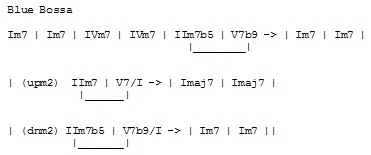
The notation is a variation on Berklee's harmonic analysis notation. Berklee doesn't use small Roman numerals for minor, so it's IIm7 rather than ii. The square brackets below the chords just indicate two-fives, and the arrows indicate dominant resolution (->) or subV half-step resolution (-->). There's no convenient up and down arrow in ANSI text, so I just use (up) and (dn). There are many who would disagree with my harmonic analysis of these tunes; there is less agreement about analysis of minor tunes that of major. Here's one in major: 
In this one I use o: to indicate a return to the original key. Another thing I do is memorize the first chord of the tune and the staring note. Stella starts on #IVm7b5, melody is root. Even better is to memorize the first interval: Stella, half-step down; Days of Wine and Roses, M6 up. That may seem obvious, but when I was starting out, I didn't realize the importance. Well, for what for what it's worth, that's one of the ways I work on transposition skills. That's not to say I go through all those mental gymnastics on a gig when transposing on the spot. But I will resort to thinking analytically when my ear doesn't provide the answer, and vice versa. Maybe some of this will be of help to those who are just starting out to build transposition skills. 03/09/2007 Reminder 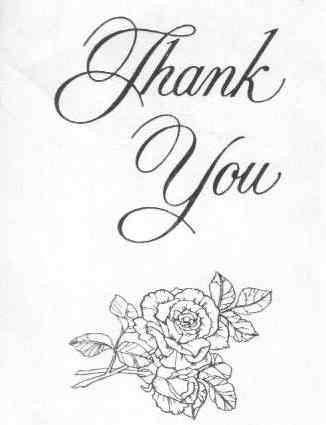
I was cleaning out my files this morning, and I came across a thank-you note I had gotten from a student more than twenty years ago. Click here to read it. Nice to be reminded of what's important. 03/07/2007 Could Be Jazzier John Shore wrote a nice review of my site for the Spotlight magazine. It's available online -- click here to read the review. His main criticism was my site could be jazzier if I added more photos. I've begun to remedy that. I took my digital camera along on the most recent gig, and had Mal take some photos. I included them in the Lamprey River gig journal. Mal will be taking more photos on gigs, so I'll be able to jazz up the site. 02/25/2007 Give Peavey a Chance 
About twelve years ago, I was preparing for a presentation at a conference to be held at McGill University in Montreal. I was to be demonstrating my THoTH program (at that time called Orpheus), and I wanted to play some examples on my guitar. My wife and I would be driving to Montreal, and I didn't want to take the Ampeg B-15, partly because of space considerations. So I went to Wurlitzer Music and bought a small Peavey amp, a Studio Pro 112. I used it in my presentation, and it worked out well. Since then I've used the Peavey on several gigs, mostly in small bookshops, or on boats, or other places where lugging the B-15 was impractical. But I've never been crazy about the sound of the Peavey. Now that is changing for the better. As I mentioned in my previous post, I have a series of gigs coming up at the Riverworks Restaurant. I will need to lug my equipment up a narrow, winding staircase. Mal suggested I use the Peavey; I said I didn't really like the sound, but, on the other hand, I would much rather carry the Peavey up the stairs than the Ampeg. When I sat down tonight in my home studio to practice, I plugged into the Behringer tube pre-amp, and into the Peavey, as I'd done many times before. But for some reason, tonight it sounded much better. Maybe I had different settings, or maybe I've unconsciously adjusted my technique to the amp, but, for whatever reason, it sounded fine. So I'll use the Peavey this week at Riverworks. I think I'll also use it on Sunday with the trio at the Lamprey River Tavern. There the upright bass, drums, and guitar are jammed into a small area near the window. The Ampeg takes up too much space, and, given the setup, doesn't sound great, anyway. I'll give the Peavey a chance. 02/23/2007 New in Newmarket My wife and I have always enjoyed going to dinner at the Riverworks Restaurant & Tavern in Newmarket. The menu is varied, providing a lot of vegetarian and seafood choices, the quality of the food is excellent, the wait staff is pleasant, and the ambiance is cozy and relaxing. I've always thought it would be a nice place to play solo guitar, but I was concerned that the size and setup of the restaurant might not work. The restaurant is on the second floor -- the tavern is on the first floor -- and the stairway is in the middle of the room, creating, in effect, a restaurant consisting of two rooms. The ceiling is high, with the old rafters exposed, and so the two rooms are joined by the open space above. Sound would carry well between the two rooms, allowing me to play softly and still be heard throughout the restaurant. But visibility would be limited to the room I was set up in. Actually, I thought all along that the setup would be fine for solo guitar, but I was concerned that the owner might not share my vision. The Riverworks, as far as I know, had never had live music in the restaurant -- only in the tavern. Last December, when my wife and I were at the Riverworks for dinner, I left a press kit and CD with the waitress, asking her to give it to the manager. The waitress was very nice and seemed excited about the idea of live music in the restaurant. Recently I got an email from the manager asking if I'd play an Easter Jazz Brunch at the Riverworks. Of course, I said yes. Then she wrote back and said she'd talked with the owner, and they'd like to try a special Jazz Dinner every Thursday in March. Was I interested? Certainly! I'm really looking forward to this series of gigs. The Riverworks is a place I've wanted to play since the first time I set foot in there. It's so nice when things like this fall into place. 02/17/2007 Melody the Soul of Music 
While working on examples for my upcoming jazz seminar, I came up with a chord progression that I really like. I think I'll write a tune around it. I think the best way to write a tune is to start with melody, not a chord progression, but as a guitarist I do tend to think in chords first. Reflecting on this, I was reminded of a statement I'd once read: "Melody is the soul of music." I couldn't remember who said that, so I Googled it and found: Although the youthful Max Bruch intended to be a painter, he incalculably enriched the violin repertoire through his contributions as a composer. When asked why he, a pianist, had taken such an interest in the violin, he replied, "because the violin can sing a melody better than the piano can, and melody is the soul of music." I must admit that I've never listened much to Bruch, but even so I believe he's right. I spend a lot of time listening to piano -- I love Bill Evans, Marian McPartland, so many others -- and I often envy the fact that they have the sustain pedal. But the fact remains that the guitar can sing a melody better than the piano can. That's a good thing for a guitarist to keep in mind. 02/13/2007 File Exchange Josh Sager has been working on a fake book of original jazz tunes contributed by various "lesser-known" guitar players. He's at the point now where he needs to notate many of the leadsheets using Sibelius and this task is proving to be very time-consuming, so he's asked some of the contributors to help. Since I'll be having five tunes in the book, I volunteered to notate my pieces. I had originally submitted PDF files created from my ancient MusicPrinter Plus files; Josh needs them in Sibelius. I don't have Sibelius, so I said I'd provide MusicXML that he can import into Sibelius. I have two programs I can use for this: Finale PrintMusic and Notion. I much prefer to use Notion, but Notion does not yet export chord symbols to MusicXML, so I started to enter "Blue Illusion" into Finale. I had not used Finale for a few weeks, and once again I found that I'd forgotten what little I knew. After struggling with the non-intuitive interface for a while, I gave up and started fresh in Notion. In a few minutes I had a leadsheet. I then exported to MusicXML, opened the MusicXML file in a text editor, and added the MusicXML nodes for the chords. It's simple enough; a chord node in MusicXML can be as simple as this, for a B-flat seventh chord: 
I imported the MusicXML into Finale PrintMusic, and even though the notation would need tweaking, it's not bad. The chord symbols and notes are where they belong. I would expect Sibelius to import the MusicXML as well. Josh can then tweak the notation in Sibelius. It will save him a lot of data entry. On my end, it will be quicker to notate in Notion and paste in the harmony nodes than struggle with Finale. Once again I'm reminded how fortunate we are to have MusicXML for file exchange. 02/09/2007 Working Back I guess last week's trio of gigs, and all the other music work I was doing, made me run down; I came down with some kind of virus and I wasn't able to get out bed for three days. I hate it when that happens. I had so much I wanted to do this week: correspondence lessons to prepare, private lessons at home, Roger Davis's new piano concerto CD to listen to (more on that in a later post), not to mention practicing and writing. Of course, everything had to be rescheduled. I'm just starting to recover, but now it's been five days since I touched the guitar, so as soon as I have the strength, I need to start working up. What that means is starting with 5 minutes of practicing, then a hour or so later ten minutes, then a while later twenty. That might be enough for the first day. The next day three sessions: ten minutes, twenty minutes, thirty minutes. The danger in this situation -- coming out of a period of long hours of playing, then a sudden stop, then restarting -- is that if you don't start up again gradually, there's a real chance of developing tendonitis. 02/04/2007 Trio of Gigs This has been a busy week for gigs. Tuesday night I played solo at Dover Soul. Turnout was light. Friday I played the cocktail hour at the Dover Main Street fund raiser. There were about 400 people. After I finished, the 80's rock band Gespacho went on. They were excellent. Their guitarist, Gary Leighton, is very good, and has tremendous chops. Today (Sunday) I played in a trio with P.J. Donohue and Steve Roi at the Lamprey River Tavern in Newmarket. I hadn't played with a trio for a while, so this was a treat. Both excellent players. Among the highpoints of the day were "Triste," "Darn That Dream," and "If You Never Come To Me." We played my jazz waltz "Wendy's Waltz," and Steve did a great job of reading down this tune, with its quirky chord progression. 02/01/2007 THoTH update Yesterday I released the version 2.2 update to THoTH. It has a lot of new functionality, and some improvements to the analysis engine. I've included a few new MusicXML files, which means more chord-scale analyses available. 01/15/2007 Prescence Chamber 1 Entered I've been meaning to record the Presence Chamber duets for a long time, and I finally got a start on it. I recorded the rhythm guitar part of "Presence Chamber 1" in n-Track Studio. Then I realized I needed a count-off for recording the first gutiar part. So rather than just use a metronome, I decided to make a drum part in Notion, export a wav file, and use that wave file as the "click track." I did that, and then overdubbed the first guitar part. The drums added so much to the piece that I decided to leave them in. I created an MP3 file. The drums are centered, the rhythm guitar is panned hard left, and the first guitar is panned hard right, so students can use this MP3 file for practicing either part. The playing is a little rough, and the sound is just so-so; I didn't add any EQ or reverb or anything. I may redo it at some point, but for now at least it is usable. 01/12/2007 More Rewriting I notated, using Notion, another old piece. "Fragments" is a piece for solo guitar that I wrote in 1975, just after I bought my Guild. The guitar is a non-cutaway, and I wanted to write a piece that used some very high notes, so I could get used to working around the non-cutaway. The title comes from T. S. Eliot's "The Wasteland": "These fragments I have shored up against my ruins." I produced the MP3 file using Notion playback. It does a pretty good job of simulating Rubato. When I have time, I'll record my performance of the piece in n-Track Studio and post that. Should be interesting to hear the difference. 01/12/2007 Rewriting Now that I have guitar sounds for Notion., I'm re-entering some pieces I wrote years ago, and reworking them a bit. Today I posted "Interface," "Pursuit of Image : Image of Pursuit," and "Wandering Gnome." You can find links to all these on the Guitar Lessons page. The first is a quartet, the second a trio, the third a duet. All make for good reading practice. I've made MP3 files from the Notion performance output. Doesn't sound like real guitars, but it gives a good idea of how the pieces should sound. 01/06/2007 Giant Mis-Steps 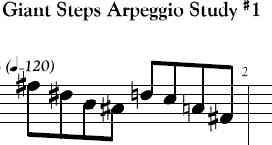
I recently installed the "Sessions: Rhythm Section" samples for Notion. The samples allow playback with guitar, bass, and drums sounds. I decided to re-enter my "Giant Steps" arpeggio study and see how it sounds in Notion playback. In the process, I discovered that I'd had a couple of errors in the study that I had never noticed. Playback is great for proof-reading. I always play through my studies, but it's easy to play what you think you've written rather than what you actually wrote. I used Notion to save the study to a wav file, then opened the wav file in n-Track Studio and converted the wav file to an MP3 file. The first and second guitars are panned hard right and left, so the piece can be used as a chord study as well as an arpeggio study. This is the kind of thing I've wanted to do for a long time, and it's nice to now have the tools to make it all happen. |
